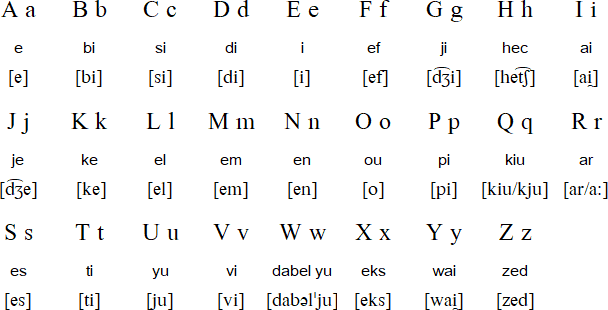Many English speakers, native or first, choose to learn an Asian language. This may be for economic or cultural reasons. However, learning a language is not something easy to do. It takes time, effort, and dedication.
You can make your journey easier by picking the right Asian language to learn. What is the easiest Asian language to learn if you speak English?
The easiest Asian language for English speakers to learn is Malay. This is because you write Malay using the Latin alphabet. It also has a simpler grammar system without plural forms, gender forms, verb tenses, or conjugation. Malay also uses many words from English, making learning easier.
In this article, let’s explore Malay, the easiest Asian language for English speakers to learn. We examine why it is the easiest language and why it may be easier to learn than Indonesian.
Why Is Malay The Easiest Language To Learn For English Speakers?
| Aspects | Explanations |
| Writing System | Both Malay and English are written in Latin alphabet. |
| Grammar | Malay and English has similar SVO word order Malay grammar does not have plural form, gender, or conjugations |
| Pronunciation | Malay is always read the way it is spelled, unlike English |
| Vocabulary | Malay absorbed many British English words |
If you find the answer surprising, it is normal. Malay is not exactly a popular language. There are nor many Malay speakers worldwide, nor is the language popular in schools or universities.
In fact, it is not as well known as its cousin, Indonesian. But aside from those reasons, Malay may just be the easiest language an English speaker can learn, due to these reasons.
Writing System
Linguists have grouped writing systems worldwide into four major types, Alphabetic, Logographic, Abjad, and Abugida.
Many European languages are alphabetic and use either the Latin or Cyrillic alphabet. Arabic and Hebrew are examples of the Abjad-style writing system.
The Abugida writing system has a set of characters, but each represents a sound instead. Examples include Thai or Japanese Hiragana. The Logographic system is basically Mandarin Chinese.
We know that English is written using an alphabetic system, and we use the Latin alphabet (A to Z). What about Malay?

Malay was first written in the Abjad-style system, taking the Arabic script. This script is called Jawi. However, a Latin script version known as Rumi was developed in the early 20th century.
Most people write Malay in Rumi script today. As an English speaker, that means you do not need to learn a whole new writing system when learning Malay.
Imagine how easy that will be compared to having to learn and master the curves and twists of, say, Thai writing?
Grammar
There are two ways you can look into grammar. One is to pick languages with simpler grammar. The simpler the grammar, the easier it is for you to learn.
Another way is to learn a language with a similar grammar system to your first language. You can do so by looking at the word order.
Word order is how grammatical elements are combined to form a sentence. In English, sentences follow a Subject-Verb-Object (SVO) arrangement.
For example, Johnny (S) eats (V) curry (O).
However, SVO is not the only word order system. There are systems such as SOV, VOS, OSV, and more.
Regarding grammar, you have some advantages as an English speaker. This is because English grammar is rather complicated. English also belongs to the SVO word order family, together with almost 50% of the languages in the world.
But what about Malay?
Malay has a simpler grammar system than English. In fact, a lot more.
Take, for example, articles. In English, we have three articles, a, an, and the. In Malay? None.
In English, we have gender forms. Waiter, waitress, tiger, tigress, and so on. In Malay? None.
In English, we have plurals. A book, books, a thief, thieves, and more. In Malay? You simply double the word. For example, rather than saying books, you double the Malay word for books (buku) into buku-buku to indicate plural.
In English, we have conjugations. We have break, broke, breaking, and so on. In Malay? None. You indicate these instead using a series of words, suffixes, and prefixes.
Malay also uses similar word order as English in the SVO arrangement. This further simplifies Malay grammar, making it easier for English speakers to learn.
Pronunciation
The rule applies here, too, pick a language with similar pronunciation characteristics as your first language, and you should be ok.
There are many qualities you can look at in pronunciation. One is timing. Timing refers to the rhythm a speaker uses when speaking a language. There are generally three types of timing, Syllable, Stress, and Mora.
When you hear someone speak in syllable-timed language, they generally sound like a motor or a machine gun. The words come out in a steady rhythm and do not have too much lilt. Examples include French, Italian, and Korean.
Mora is similar to syllable-timed language, with some minor differences. Japanese is a Mora-timed language. Stress-timed languages may have irregular rhythms and stress here and there. You may imagine the rhythm of a Morse code. English is a stress-timed language.
If you want to make your speaking lessons easier, choose a language with similar pronunciation characteristics.
Malay is not similar to English in that it is a syllable-timed language.
However, Malay words are always pronounced the way they are written.
This is unlike English. There are no silent ‘H’ words or odd French pronunciations such as restaurant in Malay.
In fact, in Malay, the habit is to convert foreign language into local Malay pronunciation. For example, a restaurant is written as Restoran in Malay.
When things are pronounced how they are spelled, you can be assured that you will not make too many pronunciation mistakes.
Use Of English Vocabulary
Malay may also be the easiest Asian language for English speakers because it absorbs many English words into its vocabulary. This is because Malaysia, Singapore, and Brunei (Where Malay is widely spoken) used to be part of the British Empire.
For example, words such as hospital, bank, or radio are used directly in Malay, with localized pronunciation. Some English words were re-spelled to adjust to the Malay spelling system, such as tire (Tayar) or exhaust (Ekzos.)
This means just by being able to speak English, you already have a headstart in your Malay vocabulary.
Now compare that to trying to recognize Mandarin characters from scratch.
One thing about this, the terms tend to be British English. This means if you speak American English, you may lose some of this advantage.
Is Malay Easier To Learn Than Indonesian For English Speakers?
Some may question if English speakers can learn Indonesian easily as well. On the surface, this makes sense. Indonesian is also written in the Latin alphabet and has a similar grammar system to Malay.
However, looking deeper, you may see that Malay is easier to learn for English speakers. First is the vocabulary.
Vocabulary
We know that Malay habitually localizes English vocabulary, but not Indonesian. They, instead, took on the vocabulary from Dutch.
The reason are the same, Indonesia was a Dutch colony for some part of its history.
| English | Malay | Dutch | Indonesian |
| Tire | Tayar | Band | Ban |
| Petrol | Petrol | Benzine | Bensin |
| Whistle | Wisel | Fluit | Pluit |
As a result, if you are an English speaker and try to learn Indonesian, you lose the vocabulary advantage. This makes Indonesian harder to learn than Malay if you speak English.
Side-By-Side Usage
One thing that makes Malay unique is how the language is used heavily with English side-by-side. This may point to the multi-ethnicity of Malay-speaking countries, such as Malaysia, Singapore, and Brunei.
As a result, you may see a lot of signboards, notices, and even letters in Malay being served with an English translation. This means if you are an English speaker learning Malay, you always have a leg-up to help you check your understanding.

You may not assume the same with Indonesian. In many cases, all you will see is Indonesian, with no English translation, except in metro or touristy areas.
Wrapping Up
Malay should be the easiest Asian language for an English speaker since it has many similarities to English. In fact, it may be simpler than English in many ways.
An English speaker should find the vocabulary, word order, and writing system easy to grasp. Aside from that, Malay also has simple grammar and is always pronounced how it is spelled.
However, whether you should learn Malay because it is the easiest Asian language still goes back to you. Learning a harder language, such as Japanese, may make sense since it has more economic value.
The key is to pick one and get started!

